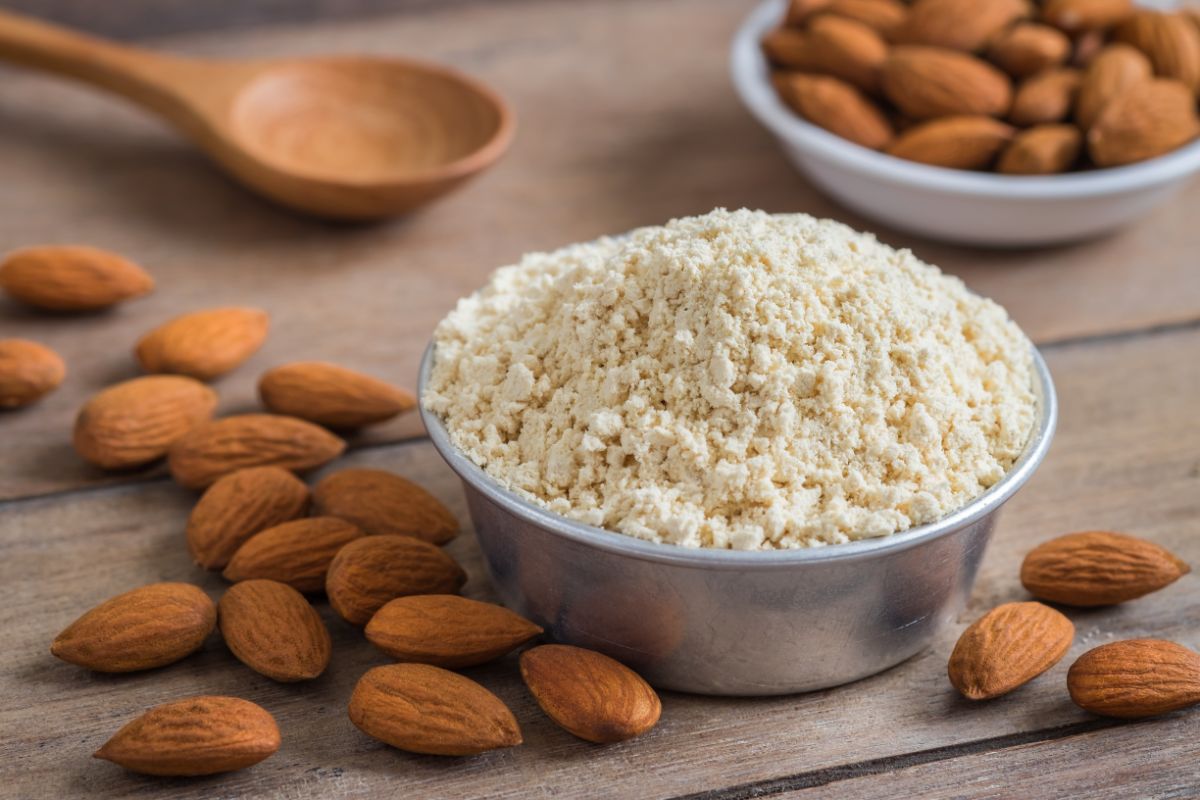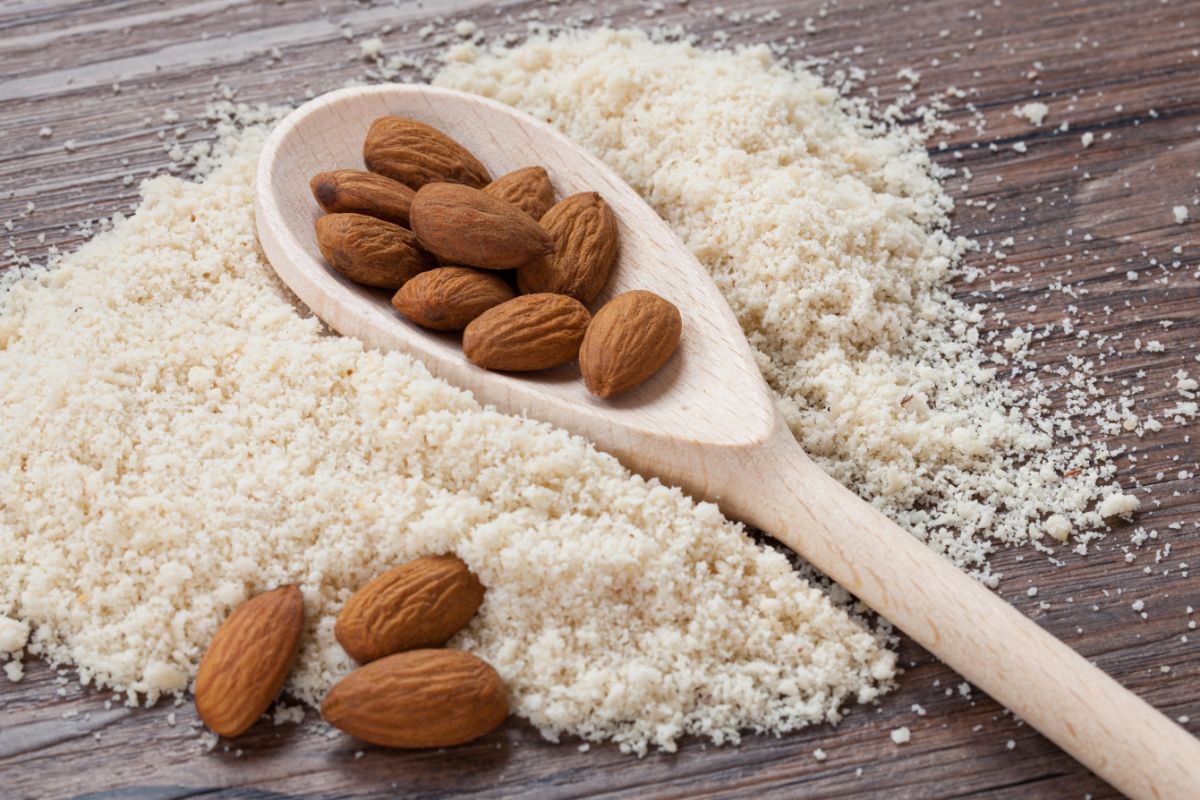Substituting some of your baking ingredients is a great way to achieve your dream end product in the most flexible manner. In reality, dedicated bakers do not stop at what they learn. They practice more even if it means coming up with a throw-away. And, with this era where there are different types of flours, high chances are that you have come across almond flour, its features, and its benefits.

The only question is, can you use it in place of regular flour? Though it requires some expertise, you can ideally swap the two flour types. However, you will need to use recipes that are specific to almond flour.
Almond flour is the newest bride in the baking industry. It is well-known for its gleaming treats that are less tender and chewier. Unlike regular baking flour, it is rich in fat. This is the force behind the moist and tender pancakes and crusty artisan bread. They are ideal where tenderness is your main goal in the baking process.
However, starting up with almond flour is not always a walk in the park. You must learn to inculcate dedication in your baking process. And, of course, roll some tricks up the sleeve.
Difference between almond flour and almond meal
Almond flours and meals are all made from ground almonds and can be used interchangeably. However, there are two distinct features that separate the two. Almond flour is made with blanched almonds whose skin has been removed.
On the other hand, almond meals are made up of ground almonds whose skins are intact. Secondly, in the processing of almond flour, blanched grains undergo intense grinding. Hence, they normally come out in a fine texture than in almond meals.
Recipe-wise, almond flours work best in French Macaroons, airy cakes, quick bread, and cookies dough. On the other hand, almond meals are the reckoning force behind the crusty bread crumbs used for topping vegan meals, casseroles, and meat coating.
The meals can also be used in cookies and quick bread dough. Due to their finer texture, almond flours are very versatile. They are ideal for lighter and fluffier dishes. Therefore, unless you want to make a heavy treat out of your dough, do not use the almond meals.
Substituting gluten flours with almond flour
Almond flours are gluten-free hence making them the best alternative for a low-carb recipe. It is the best alternative so far for people with celiac disease and gluten intolerance. However, subbing wheat flours with almonds is not an easy task.
It all depends on what you want to make out of your dough and the other secondary ingredients. For example, cakes are known to be fluffy and light. Whereas, cookies are crunchy and denser. This means, there cannot be an absolute ratio to work with when swapping the two flours.
Secondly, just as aforesaid, almond flours are nowhere drier as compared to wheat flours. The gluten network that defines the quality of the regular flour treats also misses in almond flour. Additionally, it is not as powdery and fine as its counterpart.
Most cookbooks will tell you to work with the 1:1 ratio when swapping the two flours. But, it is not as easy as you think. Factors such as texture, weight, moisture content, and density should ring in your mind before shaping your dough.
The only option is to try and stick to your “successful trials’’ before inviting any of your friends for a joint party.
Can you substitute almonds for the gluten flours?

To be concise, you can’t!
The basic reality is, that almond flour is not 100% almond. The grinding does not make it become an almond butter, neither does it interfere with its primary contents. Gluten flours contain the wheat part that cannot be magically turned into an almond.
That is where the crap lies. Only the reverse can happen!
How to store almond flour
Almonds flours are rich in oil. Therefore, when not stored well, they can easily go rancid or get oxidized. In a cool, dark environment, the flour can stay for at least one year without going bad.
The best way to keep your almond flour is through freezing. Just make sure that the flour is brought back to room temperature for use immediately from the freezer. You can also store the flour in a refrigerator for about 6 months.
Fresh almond flour produces a sweet smell with a nutty flavor and aroma. Whereas, a bad one has an off-smell with a bitter taste. Just know the state of your flour before kneading it into the dough.
Benefits of almond flour
Almond flour is laden with high concentrations of proteins, dietary fibers, and healthy fats. With only 125 grams of flour, you can meet 14% of your daily protein body requirements and about 10% of the dietary fibers.
By replacing the gluten flour, you will still meet the bodily carbohydrate requirements with a lot of ease. It is also rich in calcium, potassium, riboflavin, iron, magnesium, and vitamin B.
By going ketogenic with almonds, you will be helping your body to:
- Fight cases of atherosclerosis, strokes, and heart attacks due to its high cholesterol content.
- Minimize risks of colon cancer due to the healthy fats
- Lose excess weight since it is denser hence preventing overeating
- Minimize risks to diabetes due to its lower contents of simple sugars
- Enhance the digestion process since it is made up of nearly 10% dietary fiber. It is the best remedy for people with digestive problems such as constipation and diarrhea
- Enhance the rate of bone growth courtesy of magnesium, calcium, iron, magnesium, and potassium ions in the diet. It is the best remedy for conditions such as osteoporosis
Conclusion
Almonds make some fussier cookies worldwide. It is easier to work with, and tastes delicious and buttery.
With time, you will find it very easy to substitute the gluten network in the regular flour dough with almonds. Do not shy off from trying your luck!
